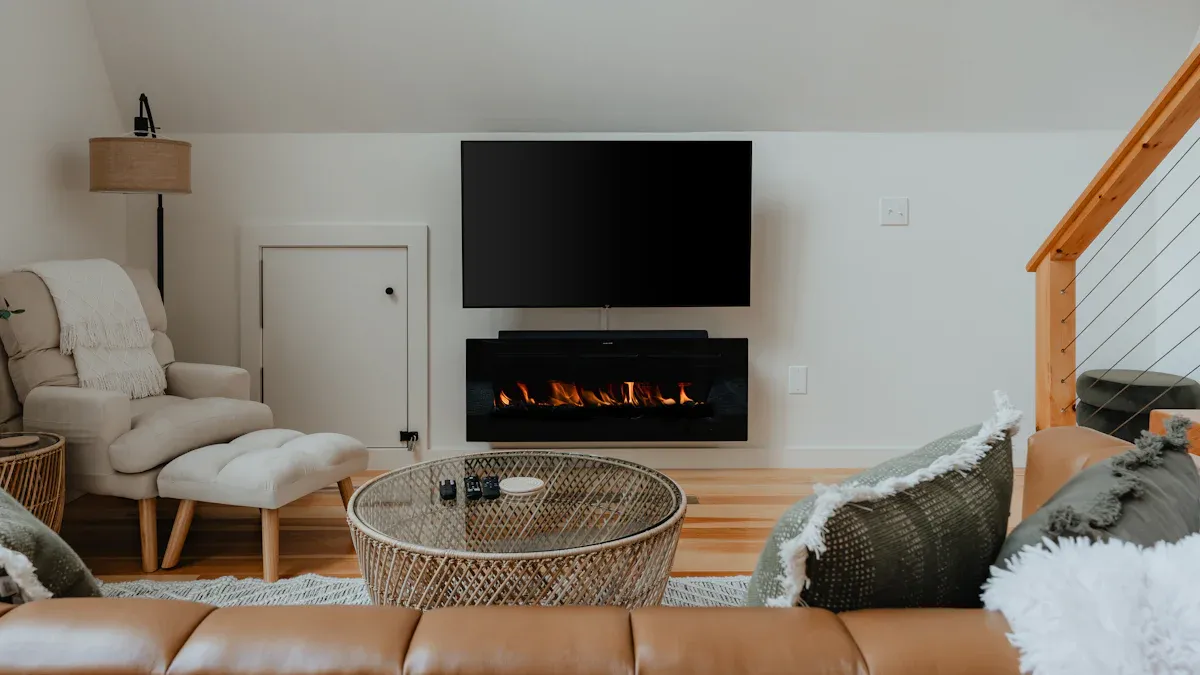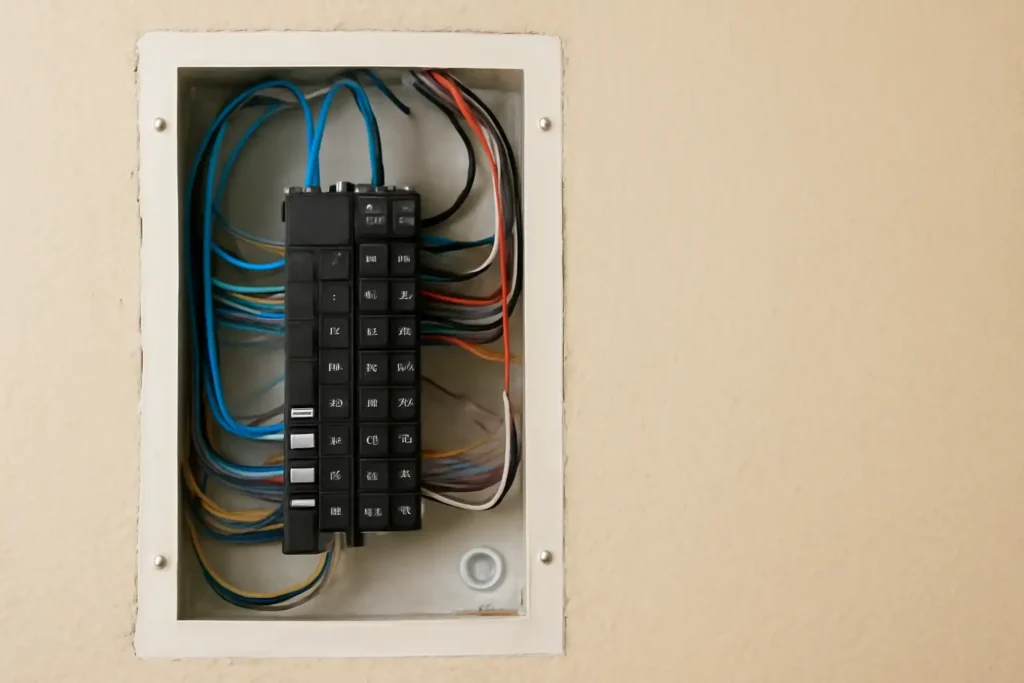You need afci protection in most rooms where people spend time. These rooms are bedrooms, living rooms, dining rooms, family rooms, kitchens, and laundry areas. Some places, like bathrooms and garages, usually do not need this protection. Local rules can be different, so always check with your local building authority or a licensed electrician before you make changes.
Key Takeaways
- Most living spaces like bedrooms and living rooms need AFCI protection. This helps stop electrical fires. Dining rooms and family rooms also need AFCI protection.
- Rooms with water, like bathrooms and garages, do not usually need AFCI. These rooms need GFCI protection to keep people safe from shocks.
- Kitchens and laundry areas often need both AFCI and GFCI protection. Some devices can give both types of protection at the same time. This makes things safer and easier.
- Local building codes can be different from the National Electrical Code. Always ask local authorities or electricians before you make changes.
- New homes must follow the newest AFCI rules. Renovations may only need updates if you add new wiring or outlets.
AFCI Required Rooms

The National Electrical Code (NEC) requires you to install afci protection in almost every living space in your home. This protection helps prevent electrical fires caused by arc faults. You must use afci breakers or devices on all 15- and 20-amp, 120-volt branch circuits that supply outlets in these rooms and areas:
Bedrooms
You need afci protection in every bedroom. Bedrooms often have lamps, chargers, and other devices that can cause arc faults. The NEC made bedrooms the first rooms to require afci, and this rule still applies today.
Living Rooms
Living rooms are places where you and your family spend a lot of time. You plug in TVs, game consoles, and other electronics here. The NEC says you must protect all outlets in living rooms with afci breakers.
Dining Rooms
You must install afci protection for all outlets in dining rooms. The NEC does not allow any exceptions for dining rooms. Only circuits for fire alarm systems in metal enclosures get an exception, not dining rooms. This means every outlet in your dining room needs afci protection.
Family Rooms
Family rooms often have many electrical devices. You might use space heaters, computers, or sound systems here. The NEC requires afci protection for all outlets in family rooms to help keep you safe.
Parlors
Parlors are formal sitting rooms. Even if you do not use this room often, you still need afci protection for all outlets. The NEC includes parlors in the list of required rooms.
Libraries
If you have a library or study in your home, you must protect all outlets with afci. Books and paper can catch fire easily, so this rule helps reduce the risk.
Dens
Dens are small rooms for relaxing or working. The NEC says you must use afci protection for all outlets in dens, just like in other living spaces.
Sunrooms
Sunrooms have lots of windows and natural light. You might use fans or small appliances here. The NEC requires afci protection for all outlets in sunrooms.
Recreation Rooms
Recreation rooms are places for games, hobbies, or exercise. You might plug in treadmills, arcade machines, or other equipment. The NEC says you must use afci protection for all outlets in these rooms.
Hallways
Hallways connect different parts of your home. Even though you may not use outlets in hallways often, the NEC requires afci protection for every outlet here.
Closets
You must install afci protection for all outlets in closets. The NEC section 210.12(A) gives clear rules for closets:
- You need afci protection for every 120-volt, single-phase, 15- and 20-amp branch circuit that supplies outlets in closets.
- You can use different types of afci devices, such as:
- A combination-type afci breaker for the whole circuit.
- A branch/feeder-type afci at the panel and an outlet branch-circuit-type afci at the first outlet box.
- A supplemental arc-protection breaker at the panel and an outlet branch-circuit-type afci at the first outlet box.
- The NEC does not allow any exceptions for closets. Every closet outlet must have afci protection.
Laundry Areas
Laundry areas have washers, dryers, and sometimes utility sinks. The NEC requires afci protection for all outlets in laundry areas. Some outlets near water may also need GFCI protection, so you should check your local code or ask an electrician.
Kitchens (AFCI & GFCI)
Kitchens have many appliances and outlets. The NEC says you must use afci protection for all 15- and 20-amp, 120-volt branch circuits that supply outlets in kitchens. Some kitchen outlets, especially those near sinks or countertops, also need GFCI protection. You may need to use a combination afci/gfci device for some circuits.
Tip: Always check your local building codes. Some areas may have extra rules for afci or gfci protection.
AFCI Not Required

Some rooms in your house do not need afci protection. The National Electrical Code says these places are exempt. It is important to know which rooms do not need it. This helps you plan your electrical work the right way. Always check your local rules. Some places have stricter codes than the NEC.
Bathrooms
You do not need afci protection for bathroom outlets. The NEC does not require it in bathrooms. Bathrooms have water and can get wet. You must use GFCI protection for all outlets in bathrooms. GFCI keeps you safe from electric shock. This is important when you use hair dryers or razors near water.
Garages
Garages do not need afci protection. You use garages for cars, tools, or projects. The NEC does not say garages need afci. But you must use GFCI outlets in garages. This is because of water and outdoor use.
Unfinished Basements
Unfinished basements do not need afci protection. If your basement has bare walls and floors, you can skip afci breakers. GFCI protection is still needed in unfinished basements. This is important if you have laundry machines or sinks.
Attics
Attics are not living spaces. You do not need afci protection for outlets in attics. You might only have a few outlets for lights or fans. GFCI is not usually needed in attics. You only need it if you have special equipment or moisture problems.
Outdoor Circuits
You do not need afci protection for outdoor outlets. The NEC does not include outdoor circuits as required areas. GFCI protection is needed for all outdoor outlets. This keeps you safe from shocks. It is important when you use power tools or holiday lights outside.
Note: Local codes may be different. Always ask your building department or a licensed electrician before you start electrical work.
Special Cases
Local Code Variations
Your city or state might have different rules than the National Electrical Code. Some places add more safety rules. Others might not need as many protections. For example, your area could want afci protection in rooms where the NEC does not. Always ask your local building department before you do electrical work. Local inspectors will tell you which rules you must follow.
Note: Local codes can change quickly. Always check for the newest rules before you work on electrical circuits.
Renovations vs. New Construction
It is important to know the rules for new homes and for renovations. New homes must follow the newest code for every circuit. If you build a new house, you must put afci protection in all needed rooms. Renovations are different. If you only change an outlet or light, you might not need to update the whole circuit. If you add new wires or make a circuit longer, you usually must follow the new code. This means you may need to add afci protection during big remodels.
- New Construction: Must follow all current code rules.
- Renovations: Only need updates if you add wires or outlets.
Combination AFCI/GFCI
Some rooms need both arc fault and ground fault protection. Kitchens and laundry areas often need both. You can use a combination afci/gfci breaker or device for these circuits. This device keeps you safe from fire and electric shock. Look for combination devices when you need both types of protection. Always read the label to make sure the device gives both protections.
Tip: Combination devices save space in your panel and make wiring simpler.
AFCI Quick Reference Table
Room-by-Room Summary
It can be tough to remember which rooms need special electrical safety. This table makes it easy to see what protection each room needs. Use the table when you plan new wiring or check your home’s setup.
| Room/Area | AFCI Required? | GFCI Required? | Notes |
|---|---|---|---|
| Bedroom | ✅ | ❌ | Always use afci for all outlets |
| Living Room | ✅ | ❌ | All outlets must have afci |
| Dining Room | ✅ | ❌ | No exceptions for dining rooms |
| Family Room | ✅ | ❌ | Protect every outlet |
| Parlor | ✅ | ❌ | Applies even if rarely used |
| Library | ✅ | ❌ | Needed for all outlets |
| Den | ✅ | ❌ | All outlets must have afci |
| Sunroom | ✅ | ❌ | Required for every outlet |
| Recreation Room | ✅ | ❌ | Needed for all outlets |
| Hallway | ✅ | ❌ | Every outlet must have afci |
| Closet | ✅ | ❌ | No exceptions |
| Laundry Area | ✅ | ✅ | Both protections may be needed |
| Kitchen | ✅ | ✅ | Use both afci and gfci for many outlets |
| Bathroom | ❌ | ✅ | Only gfci required |
| Garage | ❌ | ✅ | Only gfci required |
| Unfinished Basement | ❌ | ✅ | Only gfci required |
| Attic | ❌ | ❌ | Usually no special protection needed |
| Outdoor Circuits | ❌ | ✅ | Only gfci required |
📝 Tip: Always check your local code before you do any electrical work. Some places have extra rules for afci or gfci.
You can use this table as a simple checklist. It helps you make sure your home is safe. If you see a checkmark under “AFCI Required?”, you must use an afci breaker or device in that room. If there is a checkmark under “GFCI Required?”, you need ground fault protection. This table gives you a quick answer for every room.
Many rooms you use need afci protection today. Always look at your local codes before doing electrical work. If you are not sure, talk to a licensed electrician. Electrical safety is important for all homes. Upgrading circuits can stop fires and keep your family safe. Make good choices to protect your home.
FAQ
What does AFCI stand for?
AFCI stands for Arc Fault Circuit Interrupter. This device helps protect your home from electrical fires by detecting dangerous arcs in wiring or cords.
What happens if you do not use AFCI breakers where required?
You risk electrical fires and may not pass a home inspection. The law requires AFCI protection in many rooms. Always follow code to keep your home safe.
What is the difference between AFCI and GFCI?
AFCI protects against electrical fires from arc faults. GFCI protects you from electric shock near water. You need AFCI in living spaces and GFCI in wet areas.
What rooms need both AFCI and GFCI protection?
Kitchens and laundry areas often need both AFCI and GFCI protection. You can use a combination device to meet both safety needs.
What should you do before changing breakers or outlets?
You should always turn off the power at the main panel. Use a voltage tester to check for live wires. If you feel unsure, call a licensed electrician.
See also
Why Room Circuit Breaker Choice Matters for Your Safety
How to Identify Arc Faults in Circuit Breakers for Home Safety
Recommended Circuit Breaker Size for Laundry Room Washers
How to Identify the Type of Circuit Breaker in Your Home
How to Select RCCB Sensitivity for Your Home



